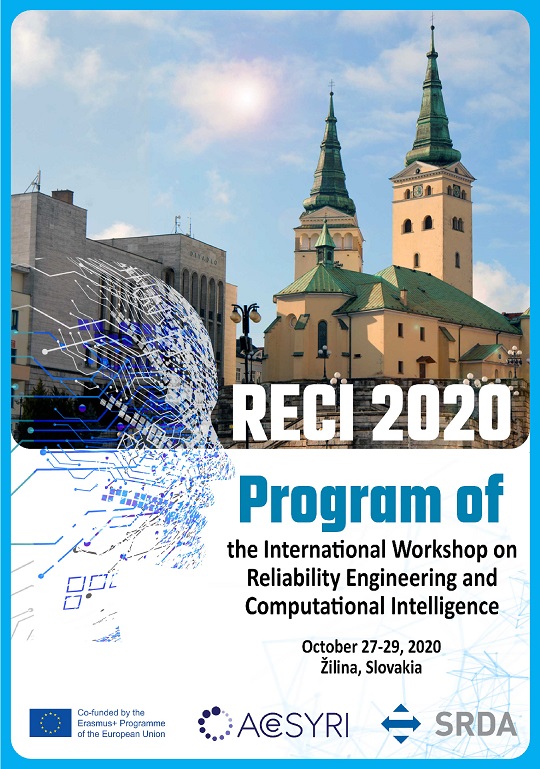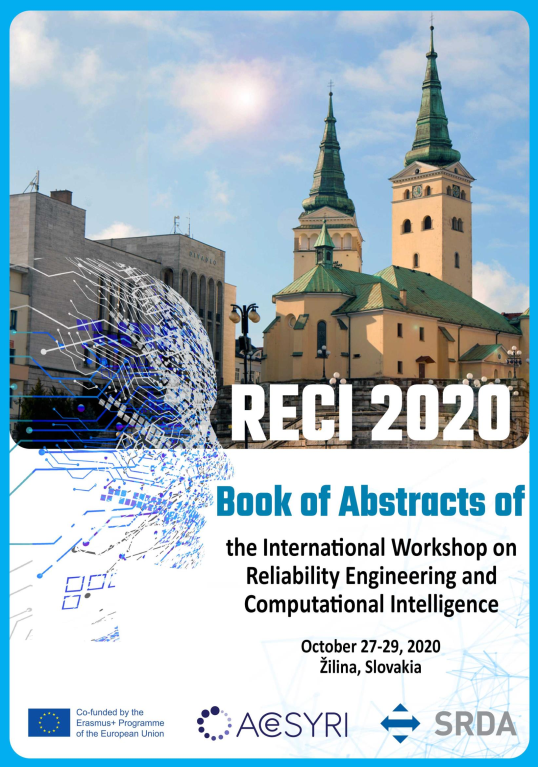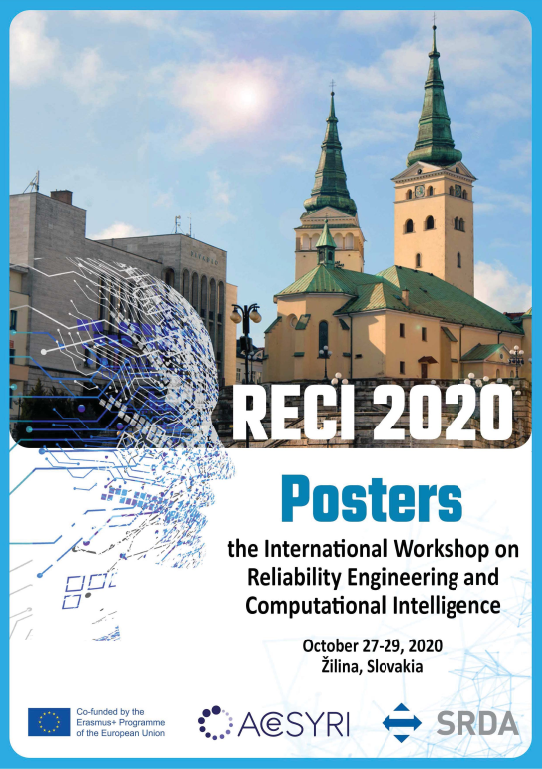The International Workshop on Reliability Engineering and Computational Intelligence
27-29 October 2020
The international workshop on Reliability Engineering and Computational Intelligence organized by IEEE Chapter of Reliability Society of the Czechoslovakia Section in cooperation with the European Safety and Reliability Association will be an online discussion in relevant trends of Reliability Engineering with application of methods of Artificial Intelligence, Data Mining, Knowledge Discovery and Computational Intelligence.
The workshop will be supported by the following projects:
- Advanced Centre for PhD Students and Young Researchers in Informatics (ACeSYRI) (Project EACEA.CBHE no.: 610166-EPP-1-2019-1-SK-EPPKA2-CBHE-JP supported by the European Union's Erasmus+ programme)
- New Methods Development for Reliability Analysis of Complex System (Project APVV-18-0027 supported by the Slovak Research and Development Agency)
Because the workshop will be held online, it is necessary to register by using this link.
Topics
The workshop is focused on a wide range of applications of computer systems. Topics of interest include but are not limited to:
- Reliability analysis and risk estimation
- Testing and fault-tolerant systems
- Accident and incident investigation
- Human reliability analysis
- Risk and hazard analysis
- Software reliability
- Data mining and knowledge discovery
- Hardware and software solutions
- Education, e-learning
Submission of Contributions
The presentation title, authors, their affiliations and abstract of 1,000 symbols should be sent to the easychair web-page.
All abstracts can be accessed here.
Publication
The workshop presentations will not be published as papers. The abstracts of presentation will be accepted at the workshop web-page. Authors of all presentation will be invited to publish papers in the journal CERES (http://ceres-journal.eu ) Authors of selected presentations will be invited to prepare the contributions for the book “Reliability Engineering and Computational Intelligence”, which will be published by Springer in series of Studies in Computational Intelligence (word template).
Poster
If you will present your research results in the form of a poster, please use the following template (Template .pptx).
All posters can be accessed here.












